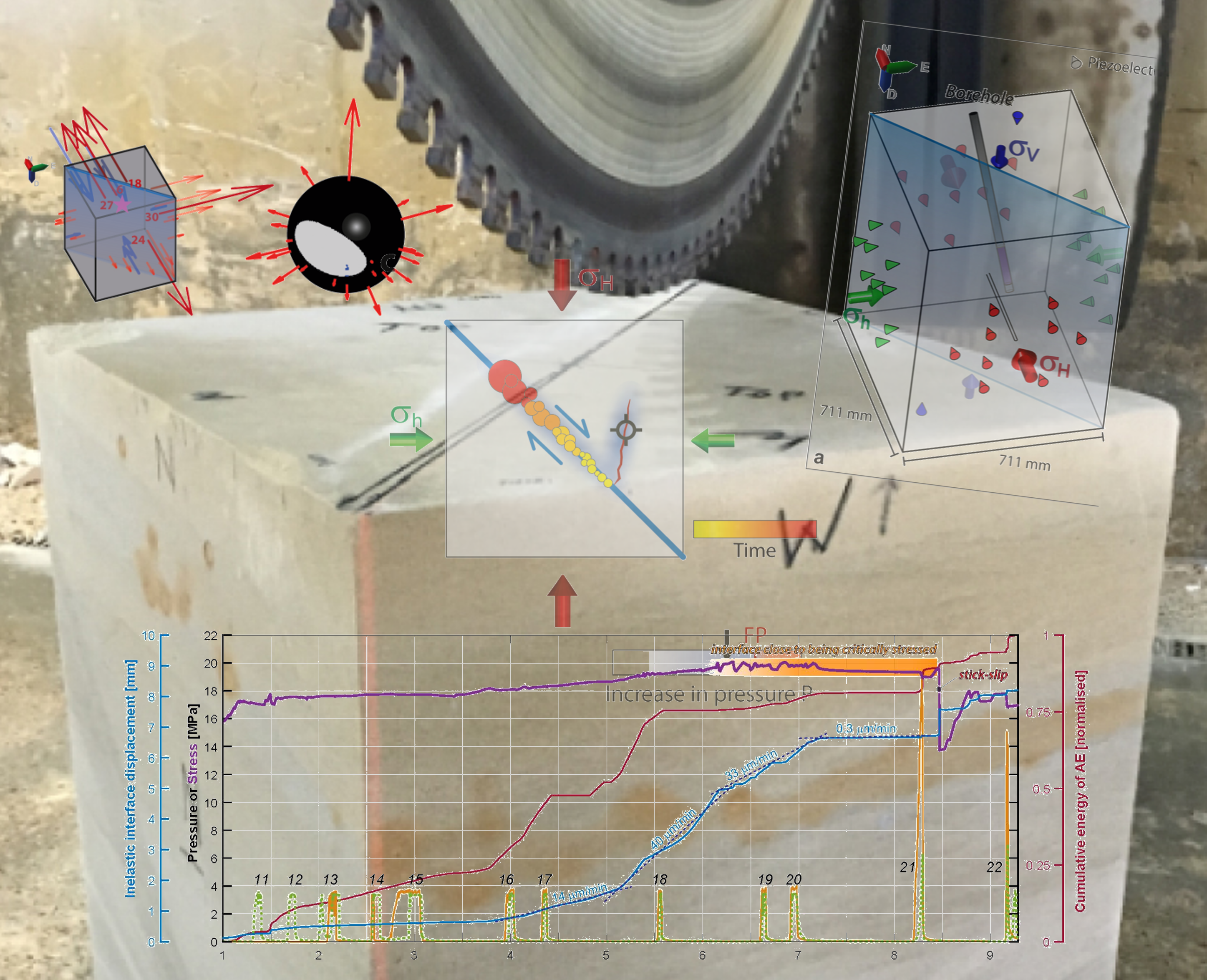Seismicity induced by fluid injection
Published in Earth & Environment

One contribution in limiting the severity of climate change is the effective and safe storage of huge amounts of CO2 in geological storages. Understanding the relation between large-scale CO2 injection and the potential of induced seismicity is an important part in the containment monitoring. Injection pressures, volumes and rates, stand clearly in relation to the potential and extent of induced seismicity, and, at least equally important, are the geological conditions in and around the storage site, including the potential existence of fluid pathways, small fractures and faults and their individual state of stress.
In this article's laboratory experiment we inject fluids at different injection pressures at a certain distance to an artificial fault, represented by a saw-cut through a cubic-meter sandstone block. During different stages of the experiment, we create characteristically different failures in the block, including shear-deformation along the artificial fault, creation of new fractures, fracture opening and closing events due to high-fluid injection, and tremor-like deformation with a stick-slip movement along the whole fault patch representing induced seismicity on a pre-existing, critically stressed fault patch.
As the sandstone block was assembled in a true triaxial loading frame and equipped with 38 piezoelectric sensors, we were able to locate and characterise the acoustic emission events based on the observed waveforms. Seismicity observations from field-scale CO2 injection at Decatur, Illinois, U.S., show that small-magnitude microseismic events occur as a response to CO2 injection, and the majority of these events occurs in spatially defined clusters up to a few kilometers away from the injection well. Through comparison of the laboratory experiment with the observations at Decatur we discuss a conceptual model that shows that the existence of fluid pathways and critically stressed fault patches play a decisive role for the potential of induced seismicity related to large-scale, low-pressure fluid injection.
 The figure shows preparation of the saw-cut through the cubic-meter sandstone together with key figures of the manuscript, including fluid injection, stress paths and acoustic emission characterisation.
The figure shows preparation of the saw-cut through the cubic-meter sandstone together with key figures of the manuscript, including fluid injection, stress paths and acoustic emission characterisation.
Follow the Topic
-
Scientific Reports

An open access journal publishing original research from across all areas of the natural sciences, psychology, medicine and engineering.
Related Collections
With Collections, you can get published faster and increase your visibility.
Obesity
Publishing Model: Hybrid
Deadline: Apr 24, 2026
Reproductive Health
Publishing Model: Hybrid
Deadline: Mar 30, 2026



Please sign in or register for FREE
If you are a registered user on Research Communities by Springer Nature, please sign in